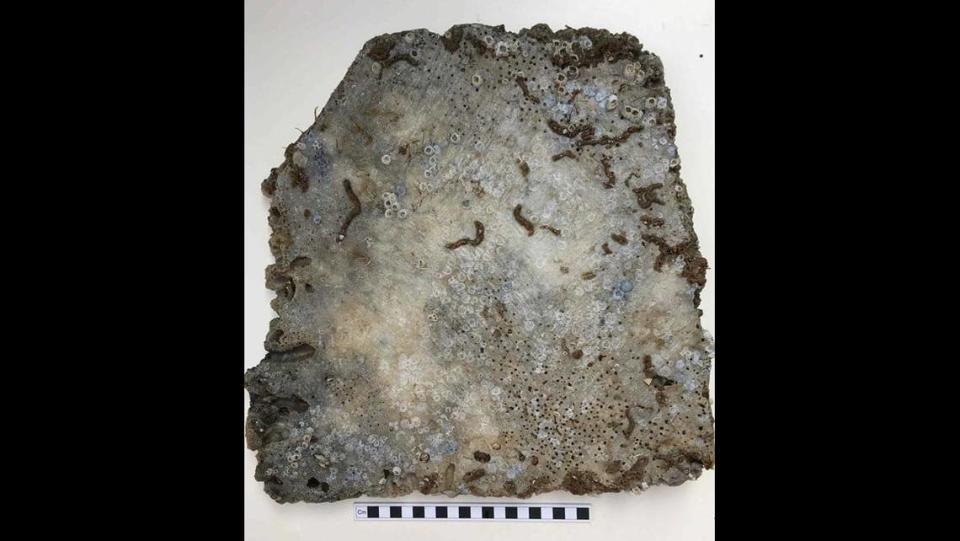Mysterious shipwreck discovered years ago off UK coast. Now researchers have answers
In 2015, the UK Hydrographic Office detected something odd in the seabed off the coast of Sussex, England.
The anomaly wasn’t investigated until 2019, when a local diver confirmed that mysterious discovery was actually a shipwreck.
For the past four years, the ship was called “Unknown Wreck off Eastbourne.” Now, it has a name.
Historians, researchers and specialists from Historic England, the Cultural Heritage Agency of the Netherlands and the Nautical Archaeology Society worked together to identify the ship as the Klein Hollandia, a 17th-century Dutch warship.
“The identification of the ‘Klein Hollandia’ offers a glimpse back into the seventeenth century, giving us a chance to learn more about the maritime history of this period and to uncover treasures which have been underwater for hundreds of years,” Heritage Minister Lord Parkinson of Whitley Bay said in a Historic England news release.
Divers have now visited the shipwreck 282 times, collecting evidence used to identify the ship. They gathered artifacts, took notes about the shape and build of the ship and even used the tree rings of the ship’s wood to determine when the trees might have grown.
The divers found cannons, Italian marble slabs and pieces of Italian pottery. The researchers were able to trace the Italian marble to the Apuan Alps, the source of the same elite material used by Michelangelo and Atonio Canova.

The Klein Hollandia has been on the bottom of the ocean since the late 1600s when it sank in a battle during the era of the Anglo-Dutch wars. Owned by the Admiralty of Rotterdam, the ship was attacked by an English fleet in March 1672 before being boarded and conquered. The ship sustained so much damage that despite being successfully taken by the English, the ship sank with Dutchmen and Englishmen alike.
The wreck is deemed so culturally and historically significant that it is under the highest level of legal protection, the Protection of Wrecks Act 1973. The Klein Hollandia is considered to be in “remarkable” condition considering its age, and researchers say it will provide historians a wealth of information about how Dutch ships were built in the 17th century and how they were used.
“Uncovering the story of the warship ‘Klein Hollandia’ opens up another fascinating chapter in the already rich, shared maritime history between the UK and the Netherlands,” Historic England Chief Executive Duncan Wilson said in the news release.
1,100-year-old prank? Or important symbol? Handprint uncovered along moat in Israel
Cryptic rock paintings — all over 6,000 years old — rediscovered in China. Take a look
Unearthed mummy may be ‘most complete’ one ever found in Egypt, archaeologists say
Pink sarcophagus — weighing over 22,000 pounds — found at family burial site in Egypt

 Yahoo Movies
Yahoo Movies 
